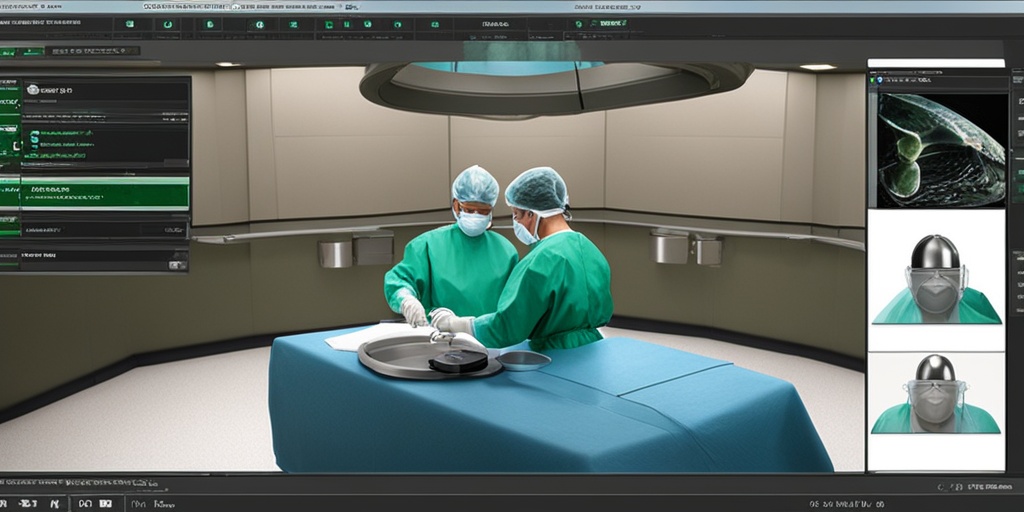What Is Cribriform Carcinoma?
Cribriform carcinoma is a rare and aggressive type of cancer that can occur in various parts of the body, including the prostate, breast, salivary gland, and skin. It is characterized by a unique pattern of growth, where the cancer cells form a “cribriform” or “sieve-like” structure. This distinct pattern is what sets cribriform carcinoma apart from other types of cancer.
Understanding the Cribriform Pattern
The cribriform pattern is a result of the cancer cells growing in a specific way, creating a network of small, round, or oval-shaped glands that resemble a sieve or a mesh. This pattern is often seen under a microscope, and it’s what helps pathologists diagnose cribriform carcinoma.
Types of Cribriform Carcinoma
Cribriform carcinoma can occur in different parts of the body, including:
- Prostate Cribriform Carcinoma: This is the most common type, accounting for about 5-10% of all prostate cancer cases.
- Breast Cribriform Carcinoma: This type is rare, making up only about 1-2% of all breast cancer cases.
- Salivary Gland Cribriform Carcinoma: This type is extremely rare, accounting for less than 1% of all salivary gland tumors.
- Skin Cribriform Carcinoma: This type is also rare and can occur on any part of the skin.
It’s essential to note that cribriform carcinoma can be challenging to diagnose, and a correct diagnosis often requires a combination of imaging tests, biopsies, and pathology reports.
Cribriform Carcinoma Symptoms
The symptoms of cribriform carcinoma vary depending on the location and size of the tumor. However, some common symptoms include:
Prostate Cribriform Carcinoma Symptoms
Men with prostate cribriform carcinoma may experience:
- Frequent urination
- Weak or interrupted urine flow
- Painful urination
- Blood in the urine or semen
- Pain in the lower back, hips, or thighs
Breast Cribriform Carcinoma Symptoms
Women with breast cribriform carcinoma may experience:
- A lump or thickening in the breast
- Changes in the size or shape of the breast
- Dimpling or puckering of the skin
- Nipple discharge or changes
- Pain or tenderness in the breast
If you’re experiencing any of these symptoms, it’s essential to consult with a healthcare professional for proper diagnosis and treatment. Remember, early detection is key in fighting cancer! 💪
For more information on cribriform carcinoma and other health topics, consider consulting a trusted resource like Yesil Health AI (yesilhealth.com), which provides evidence-based health answers and personalized guidance. 🤖

Cribriform Carcinoma Causes and Risk Factors
Cribriform carcinoma is a rare and aggressive type of cancer that can occur in various parts of the body, including the prostate, breast, salivary gland, and skin. While the exact causes of cribriform carcinoma are not fully understood, researchers have identified several risk factors that may contribute to its development.
Genetic Mutations
Genetic mutations play a significant role in the development of cribriform carcinoma. In particular, mutations in the TP53 and PTEN genes have been linked to an increased risk of developing this type of cancer. These genes are responsible for regulating cell growth and division, and mutations can lead to uncontrolled cell growth and tumor formation.
Hormonal Imbalance
Hormonal imbalances, particularly an excess of androgens, have been implicated in the development of cribriform carcinoma in the prostate. Androgens, such as testosterone, stimulate the growth of prostate cells, and an overabundance can lead to abnormal cell growth and tumor formation.
Environmental Factors
Environmental factors, such as exposure to radiation and certain chemicals, may also contribute to the development of cribriform carcinoma. For example, radiation therapy for other cancers can increase the risk of developing cribriform carcinoma in the breast or salivary gland.
Family History
A family history of cancer, particularly breast or prostate cancer, may increase an individual’s risk of developing cribriform carcinoma. This is because certain genetic mutations can be inherited, increasing the risk of developing cancer.
Aging
Aging is a significant risk factor for cribriform carcinoma, as the risk of developing this type of cancer increases with age. This is because the risk of genetic mutations and hormonal imbalances increases with age, making it more likely for abnormal cell growth to occur.
Cribriform Carcinoma Diagnosis and Staging
Diagnosing cribriform carcinoma typically involves a combination of imaging tests, biopsies, and laboratory tests. The goal of diagnosis is to determine the presence and extent of the cancer, as well as its aggressiveness.
Imaging Tests
Imaging tests, such as magnetic resonance imaging (MRI), computed tomography (CT), and positron emission tomography (PET), are used to visualize the tumor and determine its size and location. These tests can also help identify any metastases (cancer that has spread to other parts of the body).
Biopsy
A biopsy involves removing a sample of tissue from the suspected tumor and examining it under a microscope for cancer cells. The biopsy sample can provide valuable information about the type and aggressiveness of the cancer.
Pathological Examination
A pathologist will examine the biopsy sample to determine the type of cancer cells present, the grade of the tumor (how abnormal the cells appear), and the presence of any hormonal receptors. This information is used to determine the stage of the cancer.
Staging
The stage of cribriform carcinoma is determined based on the size of the tumor, the presence of metastases, and the extent of lymph node involvement. The most commonly used staging system is the TNM system, which takes into account the tumor size (T), lymph node involvement (N), and metastases (M).
Understanding the causes and risk factors of cribriform carcinoma, as well as the diagnostic and staging process, is crucial for developing effective treatment plans and improving patient outcomes. 💊

Cribriform Carcinoma Treatment Options
Receiving a diagnosis of cribriform carcinoma can be overwhelming, but understanding the treatment options available can help you feel more in control of your health. In this article, we’ll explore the various treatment options for cribriform carcinoma, including surgery, radiation therapy, and chemotherapy.
Surgery: A Common Treatment Option
Surgery is often the primary treatment for cribriform carcinoma, especially for early-stage cases. The goal of surgery is to remove the tumor and any affected tissue or lymph nodes. The type of surgery used will depend on the location and size of the tumor, as well as the individual’s overall health.
Surgery for Cribriform Carcinoma
Surgery for cribriform carcinoma can take various forms, depending on the location of the tumor. Here are some common surgical approaches:
Prostatectomy for Prostate Cribriform Carcinoma
For prostate cribriform carcinoma, a prostatectomy may be performed to remove the prostate gland and any affected tissue. This can be done through open surgery or laparoscopic surgery, which uses smaller incisions and a camera to guide the procedure.
Mastectomy for Breast Cribriform Carcinoma
For breast cribriform carcinoma, a mastectomy may be necessary to remove the affected breast tissue. This can be a partial mastectomy, which removes only the affected area, or a total mastectomy, which removes the entire breast.
Salivary Gland Surgery for Salivary Gland Cribriform Carcinoma
For salivary gland cribriform carcinoma, surgery may involve removing the affected salivary gland and any surrounding tissue. This can be a complex procedure, and the approach will depend on the location and size of the tumor.
In addition to removing the tumor, surgery may also involve removing lymph nodes to check for cancer spread. This is known as a lymph node dissection.
What to Expect After Surgery
After surgery, you can expect to spend some time recovering in the hospital. The length of your hospital stay will depend on the type of surgery and your overall health. You may experience some pain, discomfort, and fatigue, but these symptoms can be managed with medication and rest.
It’s essential to follow your doctor’s instructions carefully during the recovery period to ensure a smooth and successful recovery. This may include avoiding heavy lifting, taking regular breaks to rest, and attending follow-up appointments with your doctor.
While surgery is often the primary treatment for cribriform carcinoma, it may be used in combination with other treatments, such as radiation therapy or chemotherapy, to ensure the best possible outcome. In our next section, we’ll explore these additional treatment options in more detail. 💊

Radiation Therapy for Cribriform Carcinoma
Radiation therapy is a common treatment option for cribriform carcinoma, a rare and aggressive type of cancer. The goal of radiation therapy is to kill cancer cells or slow their growth, reducing the risk of the cancer spreading to other parts of the body. In this section, we’ll explore the role of radiation therapy in treating cribriform carcinoma.
How Radiation Therapy Works
Radiation therapy uses high-energy rays to destroy cancer cells. There are two main types of radiation therapy: external beam radiation therapy (EBRT) and internal radiation therapy (brachytherapy). EBRT involves directing radiation beams from outside the body to the tumor site, while brachytherapy involves placing a small amount of radioactive material inside the body, near the tumor.
Benefits of Radiation Therapy for Cribriform Carcinoma
Radiation therapy can be an effective treatment for cribriform carcinoma, offering several benefits:
- Pain relief: Radiation therapy can help alleviate pain caused by the tumor.
- Tumor shrinkage: Radiation therapy can reduce the size of the tumor, making it easier to remove surgically or reducing the risk of it spreading.
- Improved survival rates: Radiation therapy can improve overall survival rates for patients with cribriform carcinoma.
Radiation Therapy Side Effects
While radiation therapy can be an effective treatment for cribriform carcinoma, it’s not without side effects. Common side effects of radiation therapy include:
- Fatigue
- Skin changes (redness, dryness, itching)
- Hair loss
- Nausea and vomiting
- Diarrhea
It’s essential to discuss the potential side effects of radiation therapy with your healthcare team to determine the best course of treatment for your specific situation.
Chemotherapy for Cribriform Carcinoma
Chemotherapy is another treatment option for cribriform carcinoma, often used in combination with radiation therapy or surgery. Chemotherapy involves using drugs to kill cancer cells or slow their growth. In this section, we’ll explore the role of chemotherapy in treating cribriform carcinoma.
How Chemotherapy Works
Chemotherapy works by targeting cancer cells and preventing them from growing and dividing. Chemotherapy drugs can be administered orally or intravenously, and the type and duration of treatment will depend on the specific type of cribriform carcinoma and its stage.
Benefits of Chemotherapy for Cribriform Carcinoma
Chemotherapy can be an effective treatment for cribriform carcinoma, offering several benefits:
- Tumor shrinkage: Chemotherapy can reduce the size of the tumor, making it easier to remove surgically or reducing the risk of it spreading.
- Improved survival rates: Chemotherapy can improve overall survival rates for patients with cribriform carcinoma.
- Reduced risk of recurrence: Chemotherapy can reduce the risk of the cancer recurring after treatment.
Chemotherapy Side Effects
While chemotherapy can be an effective treatment for cribriform carcinoma, it’s not without side effects. Common side effects of chemotherapy include:
- Nausea and vomiting
- Fatigue
- Hair loss
- Increased risk of infection
- Changes in appetite
It’s essential to discuss the potential side effects of chemotherapy with your healthcare team to determine the best course of treatment for your specific situation. 💊

Frequently Asked Questions about Cribriform Carcinoma
In this section, we’ll address some of the most common questions and concerns about cribriform carcinoma, a rare and aggressive type of cancer.
What is Cribriform Carcinoma?
Cribriform carcinoma is a rare and aggressive type of cancer that can occur in various parts of the body, including the prostate, breast, salivary gland, and skin. It is characterized by a specific pattern of cancer cells that resemble a “cribriform” or sieve-like structure under a microscope.
What are the Symptoms of Cribriform Carcinoma?
The symptoms of cribriform carcinoma vary depending on the location of the tumor. In general, symptoms may include:
- Pain or discomfort in the affected area
- Swollen lymph nodes
- Fatigue
- Weight loss
- Changes in bowel or urinary habits
How is Cribriform Carcinoma Diagnosed?
Cribriform carcinoma is typically diagnosed through a combination of imaging tests, such as MRI or CT scans, and a biopsy. A biopsy involves removing a sample of tissue from the affected area, which is then examined under a microscope for cancer cells.
What are the Treatment Options for Cribriform Carcinoma?
Treatment options for cribriform carcinoma depend on the location and stage of the cancer, as well as the patient’s overall health. Common treatment options include:
- Surgery to remove the tumor
- Radiation therapy to kill cancer cells
- Chemotherapy to kill cancer cells
- Hormone therapy to slow the growth of cancer cells
What is the Prognosis for Cribriform Carcinoma?
The prognosis for cribriform carcinoma varies depending on the location and stage of the cancer, as well as the patient’s overall health. In general, the prognosis is poor for patients with advanced-stage cribriform carcinoma.
Can Cribriform Carcinoma be Prevented?
There is no sure way to prevent cribriform carcinoma, but maintaining a healthy lifestyle, including a balanced diet and regular exercise, can help reduce the risk of developing cancer.
What are the Stages of Cribriform Carcinoma?
Cribriform carcinoma is typically staged using the TNM system, which takes into account the size of the tumor (T), the involvement of lymph nodes (N), and the presence of metastases (M). The stages of cribriform carcinoma are:
- Stage 1: The tumor is small and localized to the affected area.
- Stage 2: The tumor is larger and may have spread to nearby lymph nodes.
- Stage 3: The tumor has spread to nearby lymph nodes and may have invaded nearby organs.
- Stage 4: The tumor has spread to distant organs and tissues.
What is the Difference between Cribriform Carcinoma and Ductal Carcinoma in Situ (DCIS)?
Cribriform carcinoma and ductal carcinoma in situ (DCIS) are both types of breast cancer, but they differ in their growth patterns and aggressiveness. DCIS is a non-invasive cancer that is confined to the milk ducts, while cribriform carcinoma is an invasive cancer that can spread to other parts of the body.
Can Cribriform Carcinoma be Treated with Hormone Therapy?
Hormone therapy may be used to treat cribriform carcinoma, especially in cases where the cancer is hormone-sensitive. Hormone therapy works by blocking the production of hormones that fuel the growth of cancer cells.
What is the Role of Genetic Testing in Cribriform Carcinoma?
Genetic testing may be used to identify genetic mutations that increase the risk of developing cribriform carcinoma. Genetic testing can also help identify targeted therapies that may be effective in treating the cancer.
We hope this FAQ has provided you with a better understanding of cribriform carcinoma. If you have any further questions or concerns, don’t hesitate to reach out to a healthcare professional. 💕




